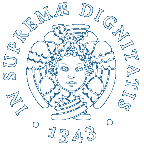2023 - 2028
In corso
Progetti internazionaliArcheologia
Responsabile scientifico: Beatrice Demarchi (PA – Metodologie della Ricerca Archeologia – Università di Torino) Responsabile scientifico locale per Pisa: Gabriele Gattiglia (PA – Metodologia della Ricerca Archeologica)
Beatrice Demarchi (PA – Metodologie della Ricerca Archeologia – Università di Torino) Lisa Yeomans (Associate Professor – Zooarchaeology – University of Copenhagen) Camilla Mazzucato (External Lecturer - Network Science - University of Copenhagen) Daniel Edward Chamberlain (PO – Rcologioa – Università di Torino) Holly Wright (Researcher – Data Management - University of York) Josefin Stiller (Assistant Professor - Ecology and Evolution - University of Copenhagen)
English version
We love birds but probably do not worry enough about our relationship with them. Across the world, we are threatening their critical ecosystem functions, including birds’ positive impact on our well-being, and poultry has become our favourite meat, yet industrial-scale breeding has consequences for human and bird health. Arguably, this lack of concern is due to our ignorance of the deep historical roots of these relationships. Our interaction with birds, for their plumage, eggs, meat, song, or spirit, extends back to prehistory. At the same time, avifauna responded to climate shifts and our modifications to the landscape. This has created a tangled archaeological record, which makes understanding bird-human relationships all but impossible. Building upon and moving beyond biomolecular archaeology, AviArch will explore, from a bird’s eye view, the transition to agriculture in Epipalaeolithic/Neolithic southwest Asia and the emergence of urban life and trade routes in Bronze Age Crete. AviArch will reveal the variety of birds in past human systems by using new techniques for the identification of avifauna, integrating zooarchaeology, palaeoproteomics and AI. Sites have been carefully chosen to target biodiversity hotspots with a rich archaeological record intersecting socio-ecological changes in human-bird relationships. We will combine ecological, morphological, and behavioural traits for each bird to produce the most refined exploration of human-avian relationships yet attempted in archaeology. Using network analysis and underpinned by multispecies theory, AviArch’s archaeoecological models will discover how environmental shifts affected people and anthropogenic- and climate-driven changes affected birds. By transforming the ways in which past bird-human interactions are studied, AviArch promises to improve human adaptivity and avian conservation strategies and make us worry and marvel at these beautiful creatures a little more.
More info here: https://www.mappalab.eu/en/aviarch-eng/


